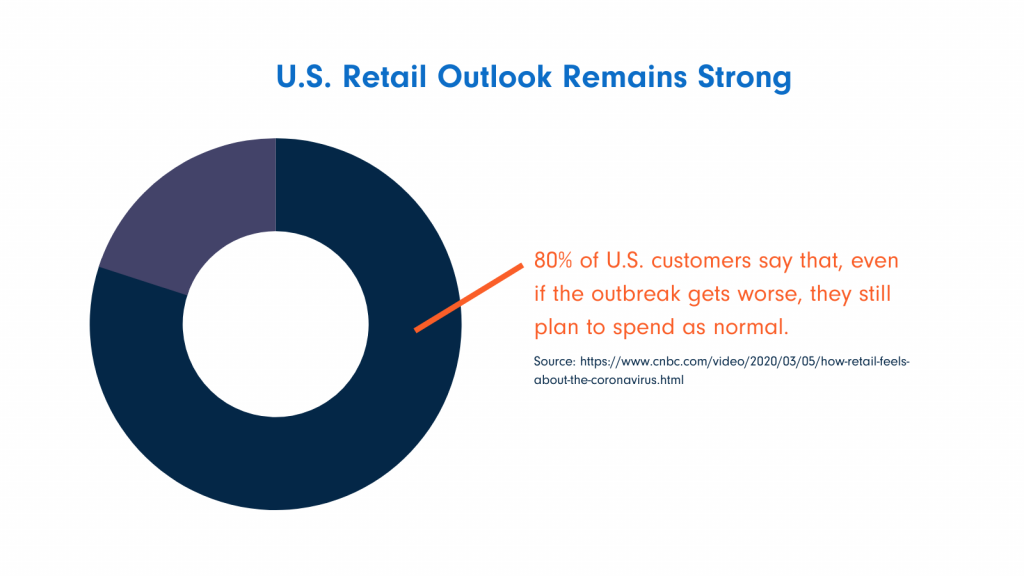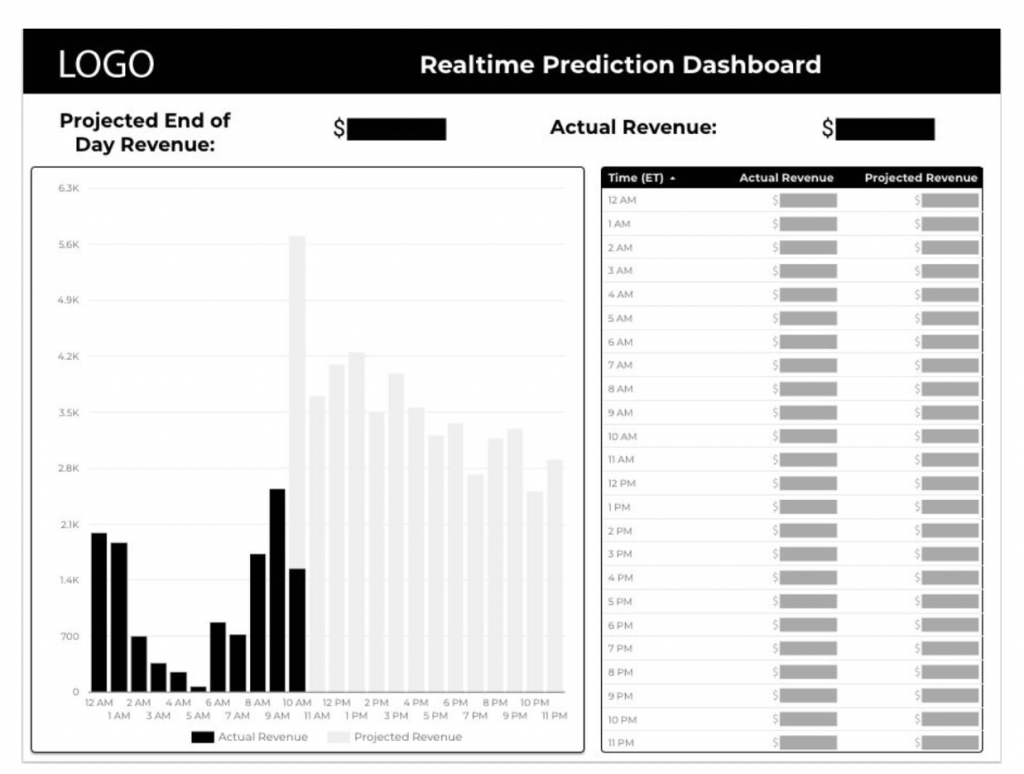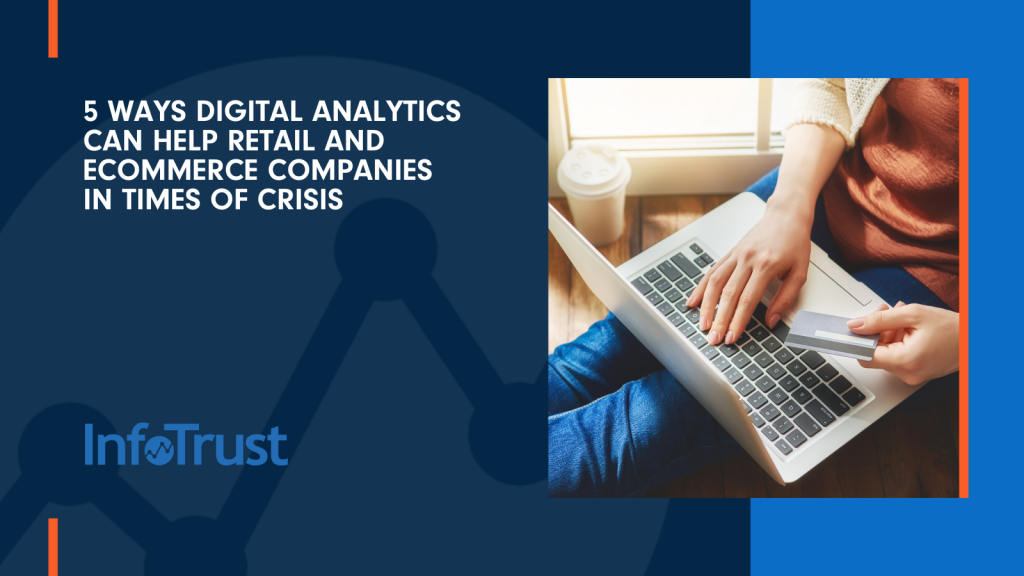What an incredible amount of change in just a few weeks.
By now, nearly every industry and working professional has felt the effects of these unprecedented times. As many people adjust to their “new normal,” such as working from home or cancelled travels and vacations, major shifts in consumer behavior are already underway. While these difficult situations provide new challenges for many industries, such as travel or CPG, some industries are experiencing opposite issues. The direct-to-consumer (D2C), eCommerce, and some retail industries are experiencing an extreme spike in digital business from the COVID-19 situation. While there is a lot of uncertainty about downstream impacts and how long the economic hit or downturn will be felt across the world, some organizations are well equipped for the shift in consumer behavior—particularly more online-buying as governments enforce shelter in place or quarantine restrictions.
When it comes to digital marketing and analytics, situations of large spikes or dips in online activity can provide a unique opportunity to innovate and build closer relationships with your customers through the usage of analytics. Particularly for the retail vertical, which over the last decade has seen a shift to more and more eCommerce practices, the surge in recent online activity can open the door for organizations to better engage and connect with their customers in ways not possible before. In fact, in the U.S., most consumers have stated that they will continue spending online at the same levels (see below). In this article, we will go over a few digital analytics tactics that D2C and retail organizations can utilize to make the most of these unprecedented times and be ready when we eventually put this situation behind us.

How Retail, DTC, and eCommerce Organizations Can Use Digital Analytics to Help and Grow
To be clear, the most important thing any organization can do is ensure the safety and well-being of their team and customers. Above all else, this needs to be the focus of every company leader. As there are hundreds of thousands of articles and resources to help organizations with the fundamental focus of safety and security, we will share some best practices and ideas for how organizations can use digital analytics to help their customers and grow their business once the fundamental need of safety and security is met.
1. Back to Basics: Building Relationship with Your Best Customers
Whether your D2C or retail organization is experiencing a large spike in online activity from customers, a significant drop, or even the same relative volume, there are unique opportunities in these situations to return to the basics. By this, we mean building your connection with your best, most-loyal customers. What do we mean by “loyal,” exactly? In this instance, we’re talking about past customers that continue to come to your online store now, versus new customers that may be trying to fulfill a temporary need given the unprecedented circumstances. Be careful not to jump on the short-term consumers that will not bring your organization lifetime value and loyalty. This is where ensuring that you have a customer lifetime value model is critical.
Reinforcing your approach to analytics as revolving around customers, and specifically identifying and engaging the 20% of customers that make up 80% of your business, is important. In times of crises, particularly when traffic may be down online, it’s easier to showcase who the top customers really are, as these are the people that continue to buy your products regularly, even when the economy is down and spending becomes more limited or specific by consumers.
Per David Rhodes and Daniel Stelter in a recent Harvard Business Review article, customer segmentation is essential not just to identify where buyers pull back, but also to “reveal products primarily purchased by people still willing to pay full price. Use that intelligence to inform product portfolio and investment choices.”
2. Use Real-Time Revenue and Reports to React Quickly
The situation with COVID-19 and new norms of working and living is changing rapidly. Every day brings new challenges, yet new opportunities. The organizations that are best equipped to react in near-real-time will have a distinct advantage, particularly with any new developments. This is where real-time reporting, particularly on revenue, products sold or viewed, and the overall engagement your consumers have with your digital assets can be critical. Though that can be challenging to enact, being nimble with the real-time reporting—coupled with testing of messaging to consumers via your testing/personalization tool—is where D2C and retail organizations can thrive.
Chris Vaughan, Head of CPG and Multi-Brand at InfoTrust, provides a great example in his post here: “If an organization knows that their products are currently in high demand (through real-time data and reporting) in the state of New Mexico, then they can feature specific messaging on their site (through Google Optimize for instance) that will only show to New Mexico users, letting them know that the organization is aware of product shortages and is working to remedy those shortages ASAP.”
Real-time reporting in Google Analytics, for example, is a built in, predefined report that can be accessed automatically. However, there are other ways to enable your real-time analytics and actionability, such as building a real-time revenue prediction dashboard. The beauty of this process is that the models will learn to adapt—even with the changing daily news. (Learn more here.)

3. Change Reporting to Focus on Key Areas
One of the more interesting developments we’ve seen in the last few weeks is the sudden surge in importance in simple “health check” data and dashboards. Not just to track the COVID-19 spread (this is a good dashboard for that), but also for D2C and retail organizations to quickly assess their “business health.” While overall topline metrics are still key to review (total users, bounce rates, orders, conversion rate, etc.), with more focus on online shopping as opposed to in person with all the lockdowns, metrics and reporting around online merchandising becomes even more important. Some quick metrics we suggest considering to review, or start tracking if not yet today, include:
Product and Promotion Impressions and Clicks On-Site
Homepage banners and merchandising becomes even more critical as the first stop for consumers today is online, given the quarantines. With Google Analytics, the Enhanced Ecommerce reports are designed to showcase these pre-purchase activities and can help identify what consumers are seeking before the purchase.
Cost-Related Metrics
Budgets are likely to shift around for online advertisers, which could open up opportunities for more inventory and competitive bidding. Few metrics that are useful to consider:
- Cost per acquisition;
- Cost per unique initiate checkout;
- Cost per unique add to cart;
[One note: Pulling cost and spend metrics across your various channels into your analytics reporting does not have to be a difficult or manual process. At InfoTrust, we developed an automated service leveraging APIs of your channels (to pull campaign spend data) and analytics platforms to auto-integrate the data every day. For Google Analytics, this leverages the Cost Data Import API as explained in this article here and case study here.]
Product Detail Views
Depending on the line of business you are in, reviewing just pageviews of product detail pages (PDPs) can help your fulfillment team plan for purchases and changes in volume needs. We are still relatively early in the COVID-19 situation where consumers are shopping—but not always buying—the products they are researching. Understanding the most popular products ahead of the purchase can help your supply side of the business prepare for possible future surges as more physical outlets are on lockdown.

4. Use Surveys to Gather Qualitative Data on Customer Feelings
While understanding your top consumers is important, along with their pre-purchase interests and activities to be able to react in real time, ultimately everyone is experiencing different feelings today. Being compassionate with your consumers is important. While digital analytics can show you an immense amount of detail around what your consumers are seeking, top brands will look to build a closer and more personal relationship with their customers. This is where onsite surveys and qualitative data collection can be helpful.
First, we advise that you be very careful not to appear insensitive to the current situation. Depending on your brand and offering, consumers may be shopping more out of necessity or seeking comfort in the troubling times. When using qualitative data collection tools, such as Google Surveys, Usabilla, SessionCam, Hotjar and others, make sure to be genuine with your questions and seek to understand your customers feelings as they shop and the why behind their engagement. One idea may be to ask how important shipping is to a customer, if you aren’t already providing free shipping (which is recommended in time of crisis). This, coupled with the analytics tips shared earlier, will give you a holistic understanding of what needs you are fulfilling for your customers now and how to build a more meaningful connection.
5. Pay Close Attention to Site Search-Specific Reporting
The last tip to share is to always pay attention to your site search reporting, particularly as there is a surge in searches and fraudulent or accidental behavior around key survival products. While these reports can be very useful to analyze the shift in consumer searches for specific products on your site—and open an opportunity to redirect the consumers to relevant or similar products to fulfill their needs—we please urge you to always consider redirecting consumers searching for life-necessity products that you do not sell to other meaningful websites. In this time of need, consumers may panic in search of critical products for their families, and the best solution is to help where/when you can.
Reach Out to InfoTrust with Questions
As I’m sure we sound like a broken record by now; these are unprecedented times and call for different actions to be taken. Changes in consumer engagement online will not always be so drastic, but keeping true to your basics and focusing on human-to-human engagement is critical. Digital analytics and reporting focused on building relationships and long-term value is what organizations seeking to come out of this situation with momentum will do.
If you need any help or have any questions where to get started, please don’t hesitate to reach out.










